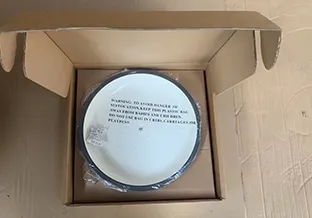
griddle iron plate
The Versatility and Importance of Griddle Iron Plates
Griddle iron plates have become a staple in both home and commercial kitchens, celebrated for their unique ability to conduct heat evenly and retain that heat over extended cooking periods. The versatility of these cooking surfaces makes them essential tools for various culinary applications, from breakfast foods to intricate dinner dishes. This article explores the advantages, uses, and maintenance of griddle iron plates.
What is a Griddle Iron Plate?
A griddle iron plate is a flat cooking surface, typically made from cast iron or carbon steel, designed for frying, cooking, and searing. Known for their durability and heat retention, these plates can withstand high temperatures and distribute heat uniformly across their surfaces. Unlike traditional frying pans, griddles have larger cooking areas, making them ideal for preparing meals for multiple people simultaneously.
Advantages of Griddle Iron Plates
One of the primary advantages of griddle iron plates is their heat retention capability. Cast iron can maintain high temperatures for long periods, ensuring that food cooks evenly without hot spots. This property is particularly valuable when cooking foods that require consistent temperatures, such as pancakes, eggs, or thinly sliced meats.
Another significant benefit is the non-stick surface that develops over time with proper seasoning. When griddle iron plates are seasoned, they create a natural non-stick layer that enhances the flavor of the food while making cleanup easier. This feature promotes healthier cooking with less oil or butter, appealing to health-conscious individuals.
Furthermore, griddle iron plates offer versatility in cooking styles. They can be used for sautéing, stir-frying, searing, and even baking. Whether cooking breakfast favorites like eggs, bacon, and hash browns, or preparing lunch options such as grilled sandwiches and quesadillas, these plates can do it all. The ability to finish a dish in the oven after searing on the stovetop is another winning feature that chefs appreciate.
griddle iron plate

Common Uses in the Kitchen
In restaurants and homes alike, griddle iron plates are used for a variety of dishes. At breakfast time, they excel at cooking fluffy pancakes, crispy bacon, and perfectly fried eggs. For lunch, sandwiches can be pressed and grilled to perfection, while quesadillas can be cooked until their cheese oozes out.
Dinner recipes can also benefit from a griddle plate. They are perfect for grilling vegetables, searing steaks, or even cooking fish. The high heat that the iron plate can achieve allows for beautiful caramelization and crust formation, enhancing the overall flavor of the dish.
Maintaining Your Griddle Iron Plate
To ensure longevity and maintain the performance of your griddle iron plate, routine maintenance is vital. It is essential to clean the plate after each use while it is still warm; scrape off any food particles with a stiff brush or spatula. Avoid using harsh soaps that can damage the seasoned surface. Instead, simply rinse with hot water and dry thoroughly.
After cleaning, it is advisable to apply a thin layer of cooking oil to prevent rust and maintain the seasoning. Store the griddle in a dry place to further protect it from moisture, which can lead to oxidation.
Conclusion
Griddle iron plates are invaluable tools for any kitchen, offering versatility, durability, and excellent heat retention. Their ability to prepare a wide range of dishes, from breakfast to dinner, makes them an essential item for both novice cooks and experienced chefs. With the right care, these iron plates can provide years of faithful service, enhancing your culinary experiences and contributing to delicious meals every day. Whether you're cooking for yourself or entertaining guests, a griddle iron plate is sure to elevate your cooking game.
-
Season Cast Iron Perfectly with GPT-4 Turbo TipsNewsAug.01,2025
-
High Quality Cast Iron Cookware - Baixiang County Zhongda MachineryNewsAug.01,2025
-
Premium Cast Iron Pan: Durable & Perfect HeatNewsAug.01,2025
-
High Quality Kitchen Durable Black Round Cast Iron Cookware Pancake Crepe Pan-Baixiang County Zhongda Machinery Manufacturing Co., Ltd.NewsAug.01,2025
-
Cast Iron Cookware - Baixiang County Zhongda Machinery | Nonstick, Heat ResistanceNewsAug.01,2025
-
High Quality Kitchen Durable Black Round Cast Iron Cookware - Baixiang County Zhongda Machinery | Non-Stick, Heat Retention, DurableNewsJul.31,2025


